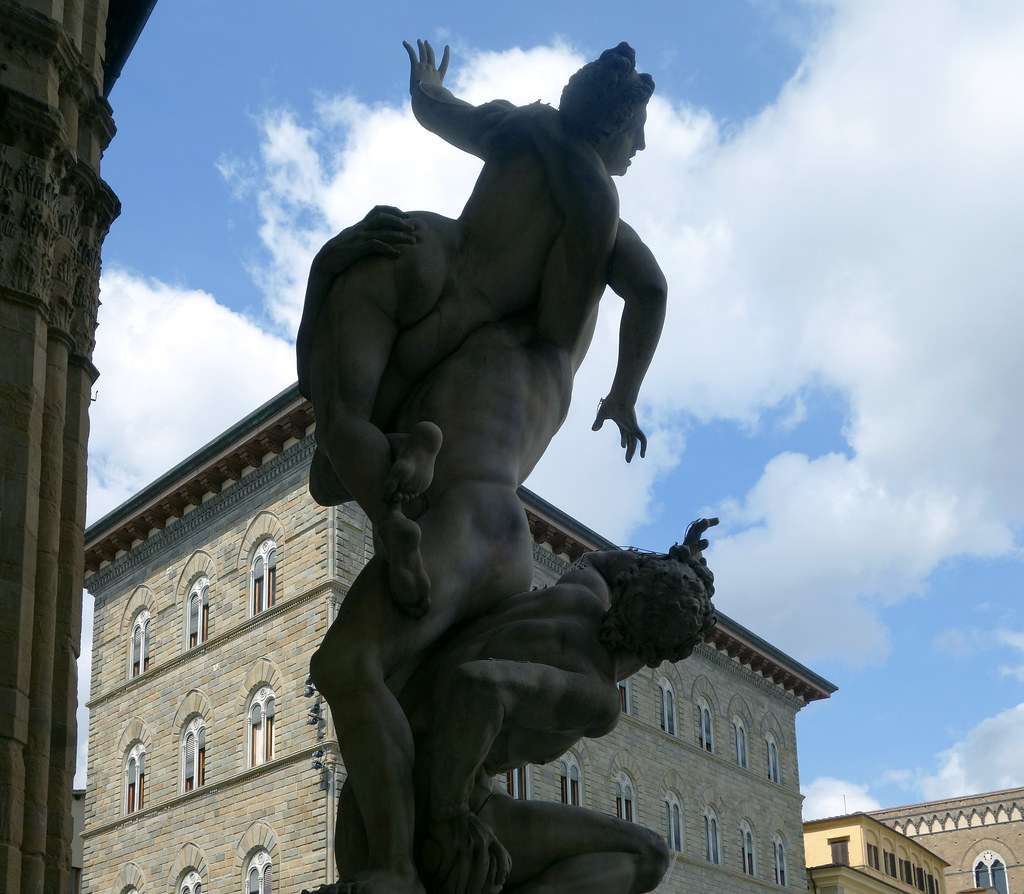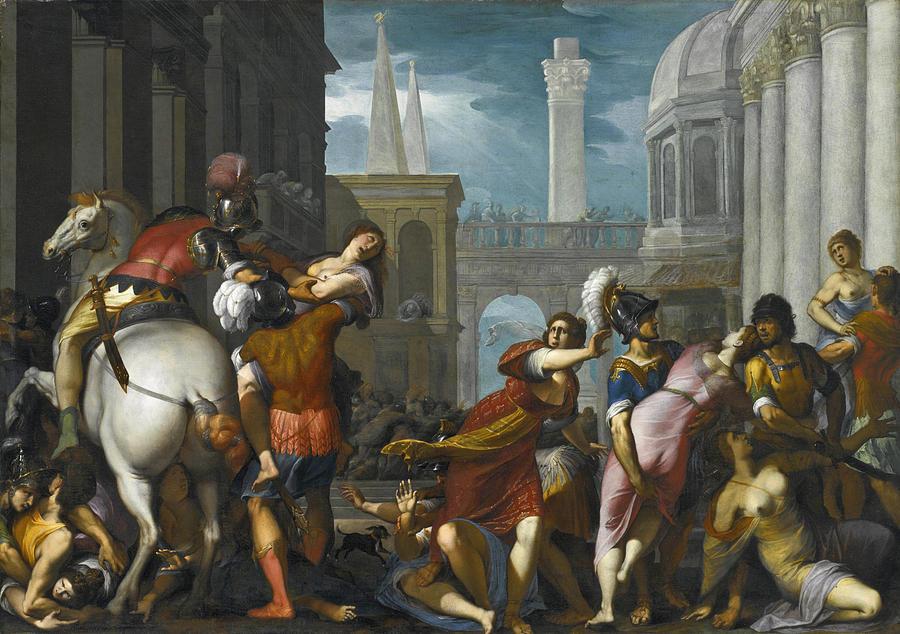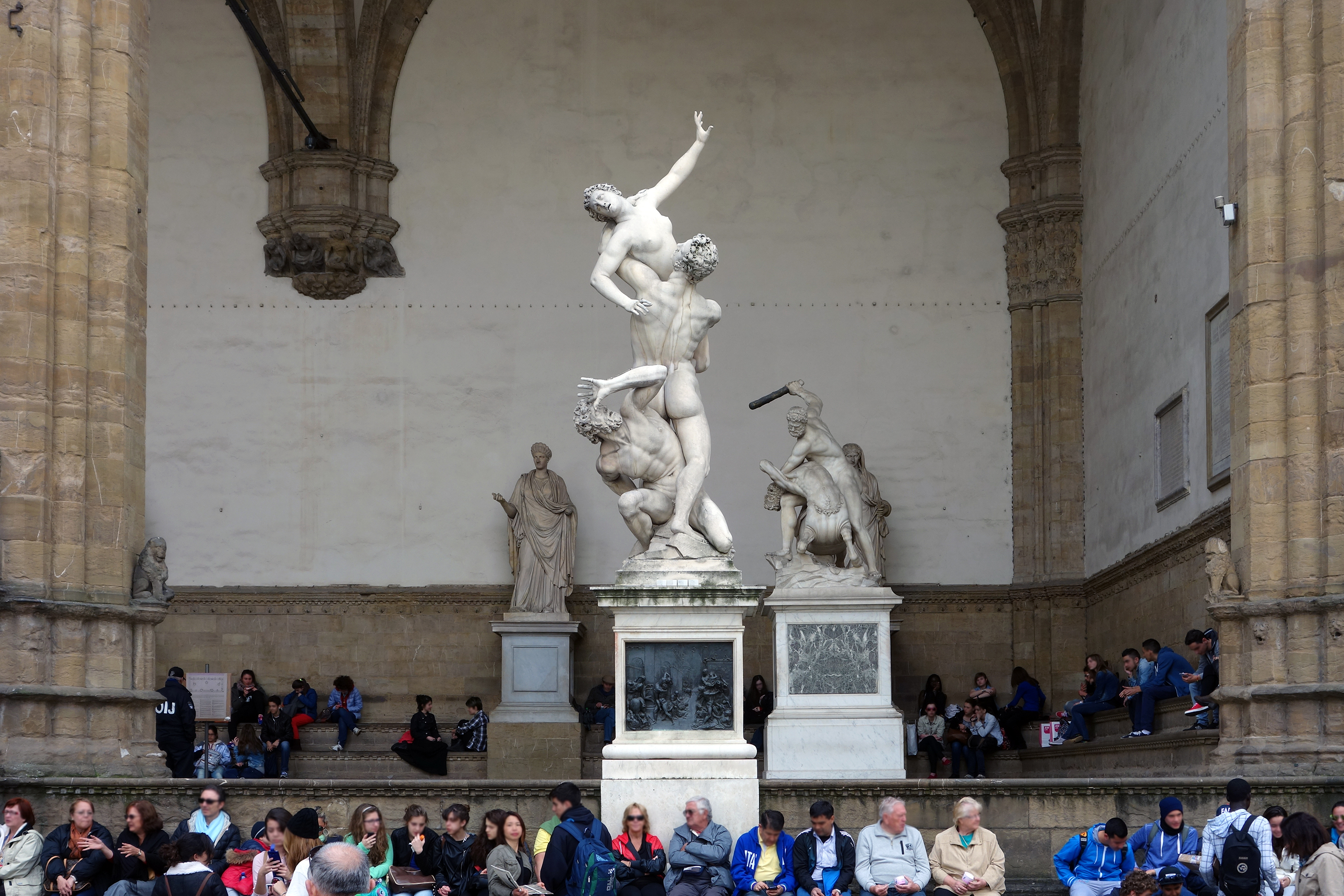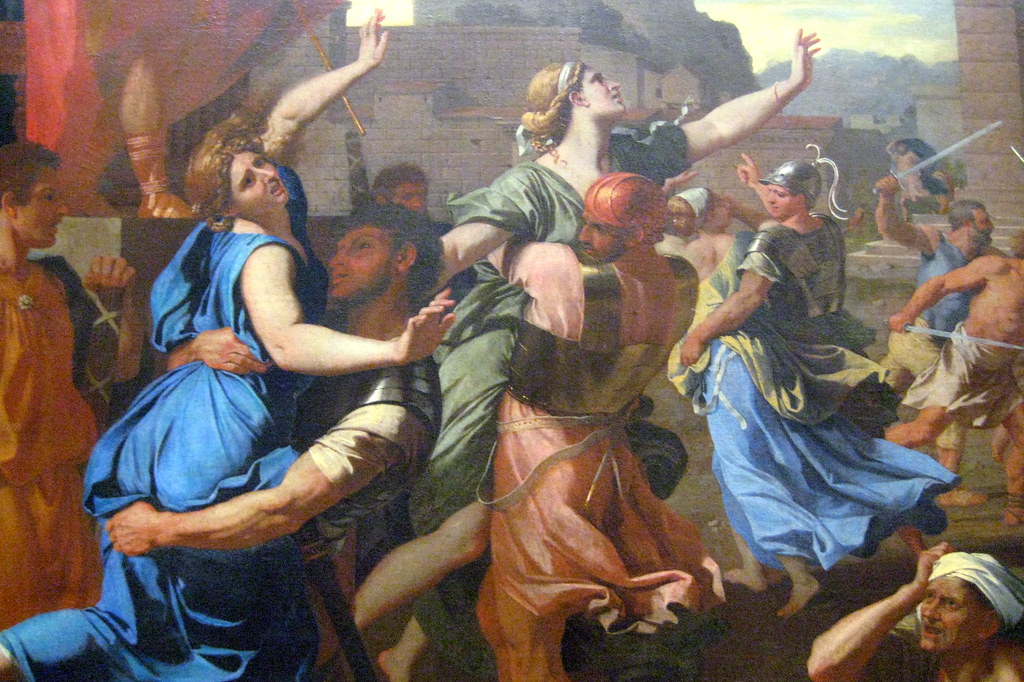
Giambologna, Abduction of a Sabine Woman Giambologna, Abdu… Flickr
The Abduction The famous Roman historian Titus Livius, known as "Livy", recounts the incident in his famous historical book " Ab Urbe Condita ", translated to "from the founding of the City"..

The Abduction of the Sabine Women Painting by Jacopo Ligozzi Fine Art
The Rape of the Sabine Women ( Latin: Sabinae raptae Classical Latin: [saˈbiː.nae̯ ˈrap.t̪ae̯] ), also known as the Abduction of the Sabine Women or the Kidnapping of the Sabine Women, was an incident in the legendary history of Rome in which the men of Rome committed a mass abduction of young women from the other cities in the region.

The abduction of the Sabine women Biblical
Giambologna's Abduction of a Sabine Woman is one of the most recognized works of sixteenth-century Italian art by one of the least well-known artists of the period. And while Giambologna may not be a household name like Michelangelo, his influence on late sixteenth- and early seventeenth- century European art was extensive and long lasting.

The Abduction of the Sabine Women Cleveland Museum of Art
Giambologna's Abduction of a Sabine Woman is one of the most recognized works of sixteenth-century Italian art by one of the least well-known artists of the period. And while Giambologna may not be a household name like Michelangelo, his influence on late sixteenth- and early seventeenth- century European art was extensive and long lasting.

After a model by Giambologna Abduction of a Sabine Woman Italian
Abduction of a Sabine Woman (or The Rape of the Sabine) is a large and complex marble statue by the Flemish sculptor and architect Giambologna (Johannes of Boulogne). It was completed between 1579 and 1583 [1] for Cosimo I de' Medici. [2] Giambologna achieved widespread fame in his lifetime, and this work is widely considered his masterpiece. [3]

NYC Metropolitan Museum of Art Abduction of the Sabine Women in
Giambologna's Abduction of a Sabine Woman is one of the most recognized works of sixteenth-century Italian art by one of the least well-known artists of the period. And while Giambologna may not be a household name like Michelangelo, his influence on late sixteenth- and early seventeenth- century European art was extensive and long lasting.
Abduction of the Sabine Woman, Bronze, 19th Century, After Giambologna
The Abduction (or Rape) of the Sabine Women is an episode in the legendary history of Rome, traditionally said to have taken place in 750 BC, in which the first generation of Roman men acquired wives for themselves from the neighboring Sabine families.

Giambologna, Abduction of a Sabine Woman Giambologna, Abdu… Flickr
The Abduction of the Sabine Women Place Italy (Artist's nationality:) Date 1670-1680 Medium Oil on canvas Dimensions 260 × 295 cm (102 × 116 in.) Credit Line Major Acquisitions Centennial Endowment; Charles H. and Mary F. S. Worcester Collection Reference Number 1991.295 IIIF Manifest https://api.artic.edu/api/v1/artworks/111620/manifest.json
19th C Parian Model of Giambologna’s 'Abduction of a Sabine Woman' For
The Abduction of a Sabine Woman is located in a spot few tourists miss—the Loggia dei Lanzi, just outside of the Palazzo Vecchio, in Florence. Giambologna and Mannerism. Giambologna's works exemplified the characteristics of the Mannerist period, a time in which artists exploited the idea of beauty for beauty's sake in works that.

The Abduction of the Sabine Women probably 1633 34 Nicolas Poussin
The Abduction of the Sabine Women Nicolas Poussin French probably 1633-34 On view at The Met Fifth Avenue in Gallery 623 This painting embodies Poussin's innovations derived from studying Roman antiquity.

Abduction of the Sabine Woman — The Art of Dr. Seuss Collection
Romulus oversees the abduction of the Sabine women (Public domain) According to Plutarch, Romulus' signal to the men of Rome was to be whenever he rose up to gather up his cloak and throw it over his body. When this signal was seen, the Romans were to fall on the Sabine maidens and carry them away.

Giambologna, Abduction of a Sabine Woman Smarthistory
Description. A pinnacle of sculpture in the generation after Michelangelo was Giambologna's Abduction of the Sabine Women, depicted here in a contemporaneous print by Andrea Andreani. Giambologna created a twisting harmony of three forms that capture the narrative of a Roman male abducting a Sabine woman and vanquishing a Sabine male below.

The abduction of the Sabine women by the people of Romulus
The story of the rape - or abduction - of the Sabine women would have been well known to Rubens and his clients. It was a famous moment in the legends surrounding the founding of Rome, referred to by several classical writers, including Plutarch, Ovid, Virgil and Livy. The accounts vary, but key details are consistent: Romulus, founder and.

NYC Metropolitan Museum of Art Abduction of the Sabine… Flickr
Published on June 19, 2020 / Updated on October 14, 2023. Email: [email protected] / Phone: +44 7429 011000. The Rape of the Sabine Women is the title of not only this painting: it also describes a horrendous incident in history. The founding of Rome in around 800BC by Romulus - one of the famed wolf-raised twins - meant that the city.

Abduction of the Sabine women in bronze, after Giambologna
Italian Baroque. Abduction of the Sabine Women (1634-5) Contents • Description • Background • The Story of the Abduction of the Sabine Women • Analysis of The Abduction of the Sabine Women • Metropolitan Museum Version (1634-5) • Louvre Version (1637-8) • Interpretation of Other Baroque Paintings Description

The Rape of the Sabine Women , also known as the Abduction of the Sabine Women or the Kidnapping of the Sabine Women, was an incident in the legendary history of Rome in which the men of Rome committed a mass abduction of young women from the other cities in the region. It has been a frequent subject of painters and sculptors, particularly since the Renaissance.